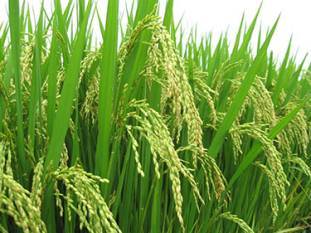THIRUVANANTHAPURAM, 18 April 2024: Rice, the lifeblood of India, transcends a mere dietary staple. It's a cultural cornerstone, a symbol of prosperity, and a source of livelihood for millions of farmers. Selecting the right rice variety is paramount for maximizing yield, adapting to regional conditions, and ultimately, ensuring farm profitability. This report delves into some of the top contenders in the Indian rice landscape, their water requirements, and how they contribute to farmer income and market demands.
Cultivating Success: Diverse Rice Options
India boasts a staggering variety of rice, with distinct characteristics catering to specific needs. Here are some prominent categories:
-
Basmati Rice: Renowned for its exquisite aroma and long, slender grains, Basmati varieties like Pusa Basmati 1121 and Sharbati are a premium export earner. However, they require specific growing conditions and are typically cultivated in Punjab, Haryana, and parts of Uttar Pradesh. Water Usage: Moderate to High.
-
High-Yielding Varieties (HYVs): Developed through research initiatives, HYVs like Sona Masuri, IR 64, and PR 11 offer impressive yields and adaptability to diverse climates. They are widely grown across India, contributing significantly to national food security. Water Usage: Moderate.
-
Drought-Tolerant Varieties: Areas with limited rainfall benefit from drought-tolerant varieties like DR Dhan 47 and Sahbhagi. These resilient options ensure stable yields even in challenging conditions. Availability: Maharashtra, Karnataka, Andhra Pradesh, and parts of Odisha. Water Usage: Low.
-
Salt-Tolerant Varieties: Coastal regions with saline soil pose a unique challenge. Fortunately, varieties like CSR 36 and Pokkali thrive in such conditions, offering hope for farmers in these areas. Availability: Andhra Pradesh, Tamil Nadu, Odisha, West Bengal, and Kerala. Water Usage: Moderate.
-
Specialty Rice: Catering to specific dietary preferences and market demands, specialty rice varieties like Gobindobhog (aromatic), Matta Rice (red rice), and Kerala Red Paragaran (medicinal properties) are gaining traction. Availability: Varies depending on the specific variety. Water Usage: Varies.
Water Conservation: A Pressing Concern
Water scarcity is a growing threat to Indian agriculture. Rice cultivation, traditionally a water-intensive crop, necessitates innovative solutions. Drought-tolerant and salt-tolerant varieties offer a glimmer of hope, allowing farmers to cultivate rice in areas previously deemed unsuitable. Additionally, water management practices like System of Rice Intensification (SRI) can significantly reduce water usage without compromising yield.
Market Demands and Global Appeal
India's rice story extends far beyond domestic consumption. The country is a leading rice exporter, catering to the diverse palates of the world. Basmati varieties, with their premium quality, fetch high market prices, boosting farmer income. Additionally, high-yielding varieties contribute to overall rice exports, strengthening India's position in the global food market.
Challenges and Considerations
Despite the vast array of rice options, challenges remain. Seed availability can fluctuate across regions. Farmers need to stay updated on the latest varieties and ensure certified seeds are procured from reputable sources. Additionally, factors like soil type, market access, and government support play a crucial role in maximizing benefits.
Empowering Farmers: Government Initiatives
The Indian government recognizes the importance of rice cultivation and has launched several initiatives to support farmers. These include subsidizing seed procurement, promoting research on drought-tolerant and water-efficient varieties, and creating better market linkages. Continued efforts in these areas, coupled with farmer education on best agricultural practices, can further elevate India's rice production and empower its farmers.
Selecting the right rice variety is a crucial decision for Indian farmers. By opting for high-yielding, climate-resilient, and water-efficient options, they can not only ensure food security but also contribute to the country's economic growth and global standing. With continued research, innovation, and farmer-centric policies, India's rice story promises to be a bowl overflowing with success.




















